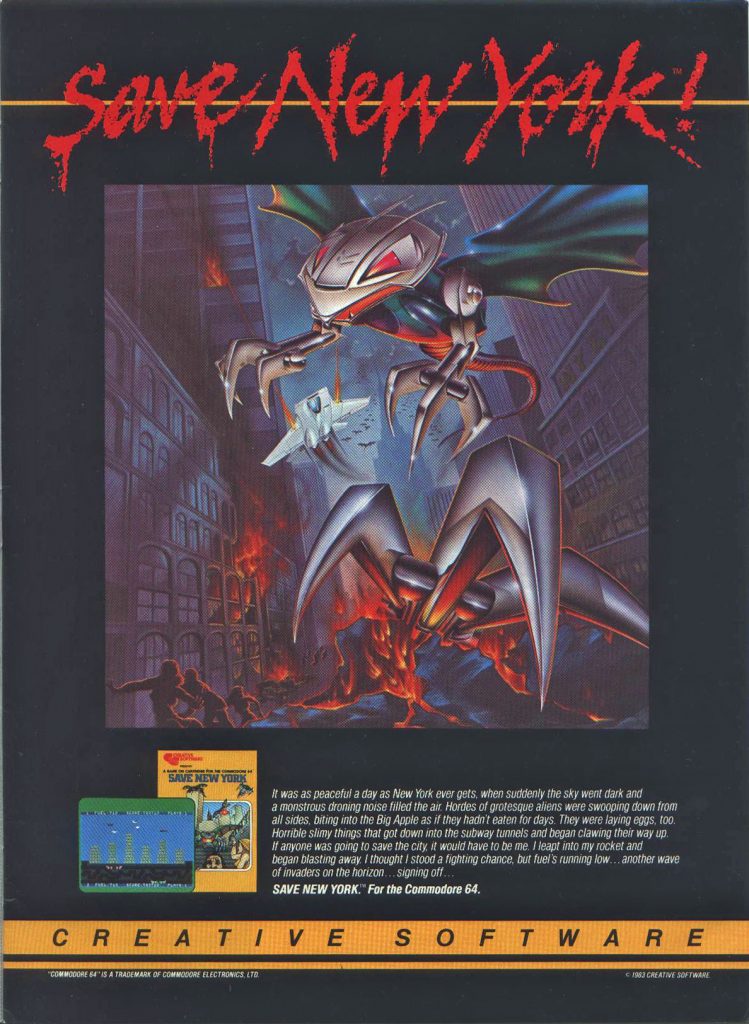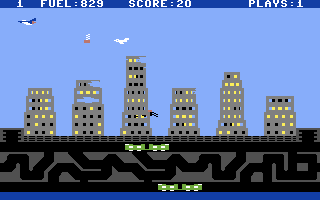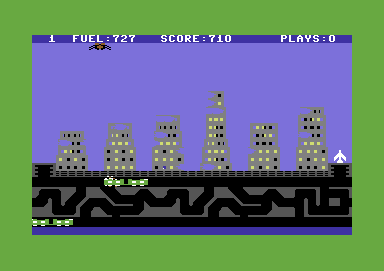
Ultima III: Exodus was released in 1983 for a variety of platforms, including the Atari 400/800, Commodore 64, Apple II, and IBM PC (DOS) among others. This is one of the most influential computer based role-playing games and it brought levels of storytelling, complexity, and depth well beyond what had been achieved up to that point.
Ultima III was significantly different and more complex than its predecessors. It blended top-down overworld exploration with tactical, turn-based combat and a complex story. Ultima III also introduced a party-based system where players control up to four characters instead of just one. Players could create a party by selecting from 11 different classes and five races, each with different strengths and weaknesses. This helped to give the game depth and replayability, something that computer based RPGs up until that point didn’t have a whole lot of.

The main quest centers around defeating the villain Exodus for which the game is named. Exodus is the child of the evil (obviously) wizard Mondain and the sorceress Minax who were the antagonists of the first two games. In order to defeat Exodus you first had to figure out how to defeat him. This involves solving puzzles and obtaining various items. While that doesn’t sound terribly novel today, approaches like this involving more than just brute force were still relatively rare for the time.
The size and detail of the Ultima III game world was impressive for the 1980s. You have to navigate continents, towns, castles, dungeons, and oceans. Each location has a unique purpose and feel. For instance, towns have a variety of NPCs which can provide clues, various shops to purchase weapons and spells, as well as hidden secrets. In addition to the overhead view points of some of these environments, dungeons offered a 1st person view point. This combination of views would influence other computer role-playing games including one of my favorite series, the AD&D Gold Box games.

Exploration is also nonlinear and open ended, something else that wasn’t terribly common at the time. Another attribute that could be considered a positive or a negative depending on your point of view was that there was no auto-mapping feature. It was in your best interest to map things on your own, as well as to take notes for future reference.
Combat takes place on a separate tactical grid, another major innovation for the time that would be copied by others for years to come. Unlike many contemporary CRPGs that relied on a limited and/or automated combat system, Ultima III features detailed turn-based battles. Things like position, range, and line-of-sight are all important. Spells and weapons have specific effects and ranges and not all enemies can be defeated with the same strategy. This is yet another innovation that would be mimicked by future

Magic is divided into clerical and wizard spells and which spells a character had access to (if any) depended on their class. Spells must be purchased and learned and the number and types of spells a character could cast depended on their abilities. All common attributes of such games today, but again very novel for the 1980s.
As you would expect, character stats (including Strength, Dexterity, Intelligence, and Wisdom) affect combat performance. In order to gain levels, you have to visit Lord British who will increase your HP as a reward for reaching certain experience levels.

While the graphics are certainly primitive by today’s standards, they were quite good for the time. Most importantly, in the overhead views everything is clear and distinctive so that it is always obvious where you are and what kind of environment you are in. The dungeon first-person viewpoints are a simple 3D wireframe but any kind of 3D view was impressive for the time.
The interface is keyboard-driven, with one-key commands (e.g., “T” to talk, “Z” to cast a spell, etc.). It’s a little complex at first but it doesn’t take long for it to become second nature and since the game is turn-base, you won’t be frustrated by not smashing the right key fast enough.

Sound is pretty minimal, with just basic sound effects and a distinctive main theme. While the sound is nothing special, it serves its purpose and really, there’s only so much sound you need in this type of game anyway.
More than any other Ultima game, Ultima III: Exodus was hugely influential in the CRPG genre. It introduced a variety of new concepts in CRPGs and influenced pretty much every CRPG that followed including the likes of the AD&D Gold Box series, Final Fantasy, Baldur’s Gate, and many, many others. For those that like turn based computer RPGs, this is a must play. Arguably, fans of the genre should play all of the Ultima games but if you are only going to pick one, then this is by far the one that had the most far reaching influence.

As far as which version to play, the original game is probably best on the Commodore 64 and Apple II with the Commodore 64 being my personal choice. However, if you are looking for a more modern way to play, then I recommend heading over to GOG.com where you can get the first three Ultima games for the grand total of a mere $2.99 at the moment.
The screen shots above are from the Commodore 64 version of the game. The ad is from the August 1984 issue of Antic.














